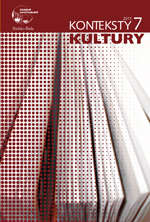„Czasem prawda nie będzie podobna do wiary”. Uwagi o wyższości prawdopodobieństwa nad prawdą w estetyce oświecenia
"Sometimes the truth is not like faith." Notes about the superiority of the likelihood of the true aesthetic enlightenment
Author(s): Roman DąbrowskiSubject(s): Literary Texts
Published by: Wydawnictwo Uniwersytetu Jagiellońskiego
Summary/Abstract: The principle of probability was in the period of Enlightenment almost entirely accepted, mainly (although not only) within the framework of the aesthetics of classicism. The above is confirmed by a number of aesthetic and literary statements of that age. Probability which evoked all that was general, that could have happened, was considered more important than the truth, which referred to individual facts. It was connected with the possibility of a certain derogation from the truth accepted by the recipients, so that the work could satisfy the didactic function (e.g. by showing the triumph of virtue), or in order to present things not the way they really are, but the way they might be. Fidelity to the probability principle was also supposed to serve the creation of an illusion in the recipients’ awareness. In various genres, this possibility of the truth modification would look different (for example, talking animals were acceptable only in a fairy tale). However, new esthetic concepts entail the departure from the probability principle, frequently in the direction of the truth understood in a new manner.
Journal: Konteksty Kultury
- Issue Year: 7/2011
- Issue No: 1
- Page Range: 128-136
- Page Count: 9
- Language: Polish

